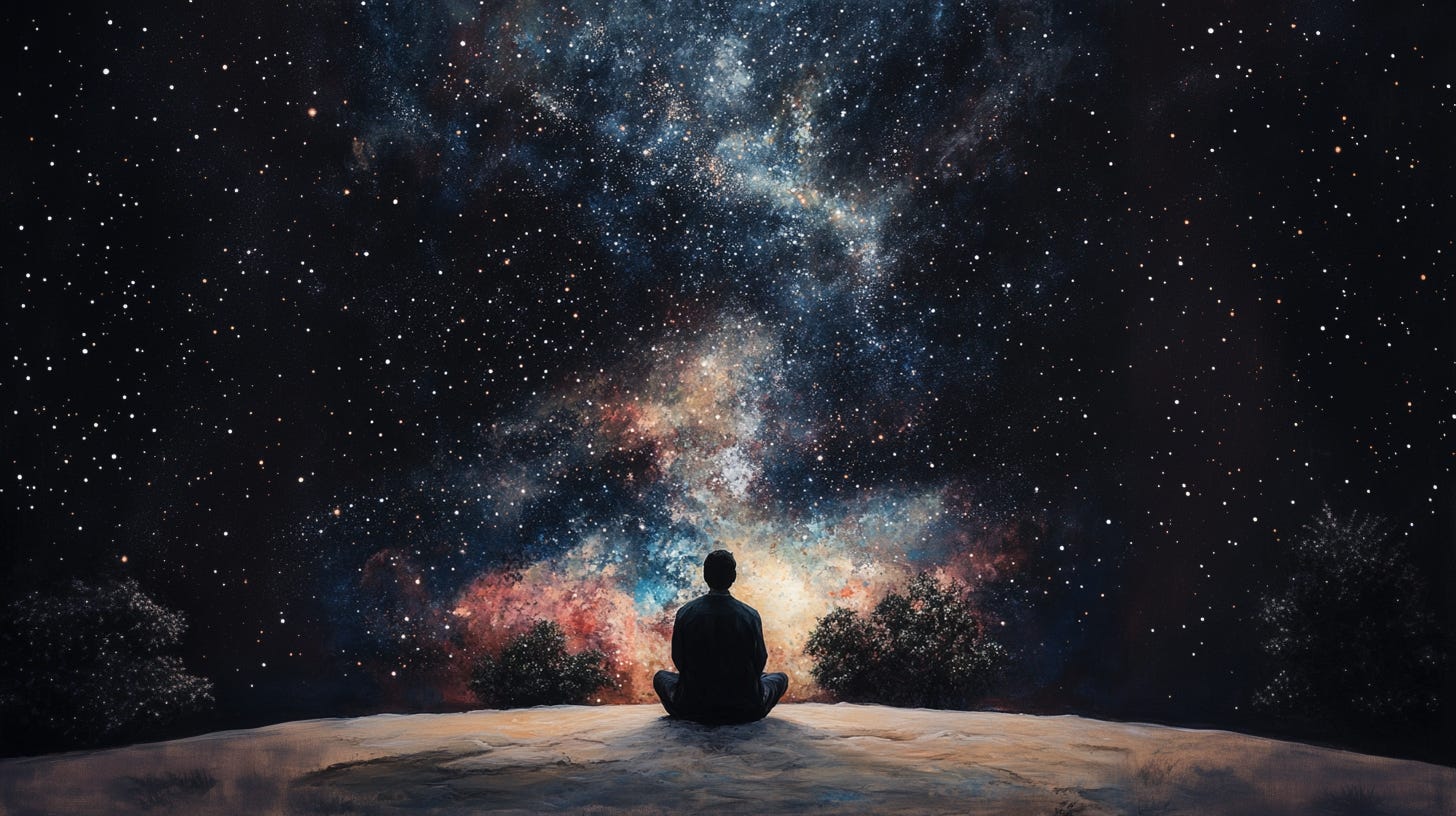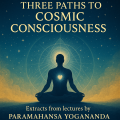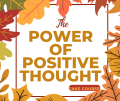
As awakened souls navigating a time of global turbulence, we are being summoned — urgently and lovingly — to remember who and what we truly are. Many talk of the soul without ever pausing to ask: What is the soul? Is it a wisp of light hidden deep within? A distant celestial spark? Or is it something far more intimate — the very breath of Divine intelligence living, pulsing, longing within us?
In this sacred reflection, let us journey through the timeless laws that govern every choice, every heartbeat, every breath. Let us uncover how our souls are active participants in the dance between the seen and unseen, the physical and the eternal.
1. Life Supports Life: The First Law of Sacred Living
From Christianity’s commandment “Love thy neighbor as thyself” to the Taoist reverence for life’s natural flow, all true spiritual traditions teach: Life exists to nurture life.
When faced with choices — whether grand or seemingly small — ask yourself: Which path supports life, and which one diminishes it? True discernment is not about choosing what is easiest or safest. It is about choosing what nurtures the sacred pulse of life within and around you.
In Hindu teachings, the sacred duty, or dharma, is not to abandon life but to uphold it with integrity. In African spirituality, to harm another being is to harm the community, the ancestors, the unborn. Life is about life.
When fear clouds your mind, remember: Choose life. Always.
2. The Law of Choice and Consequence: Every Thought Matters
The Buddha taught, “With our thoughts we make the world.” Similarly, in Jewish wisdom, every deed leaves an imprint on the world and the soul.
You are not insignificant. Every thought you entertain, every word you release, every action you take ripples into the fabric of creation.
When you catch yourself about to say something unkind or act out of anger, pause. Look in the mirror if you must, confront the ego that seeks to wound, and choose differently. Every small decision to uplift rather than to destroy shifts not only your destiny but the destiny of the whole.
Consciousness is not a theory; it is a living law.
3. The Law of Gravity: Anchoring in the Right Things
In a world bursting with perceptions — endless newsfeeds, flashing screens, passing faces — what you choose to attach your energy to determines your inner and outer reality.
Buddhist teachings tell us suffering arises from clinging. The more tightly you cling to wounds, insults, petty grievances, the more you weigh your soul down.
Let go. Do not incarnate your precious life force into meaningless dramas. Save your sacred energy for truth, for beauty, for healing. Let love — not resentment — be your anchor.
4. The Law of Action and Reaction: We Breathe the Psychic Air We Create
As in the African principle of ubuntu (“I am because we are”), the psychic environment you create is the air you breathe.
Passive aggression, bitterness, silent hostility — these are poisons you breathe first before others do. Speak truth with kindness. Heal misunderstandings quickly. Clear the psychic air, or else you will suffocate in the toxicity you helped to create.
What you put into the field comes back to you multiplied.
5. The Law of Magnetic Attraction: Faith in Your Fears or Faith in the Divine?
It is not merely positive thinking that shapes reality — it is where your deepest faith lies. Most people unknowingly have more faith in their fears than in their dreams.
You attract not what you casually wish for, but what you deeply, consistently believe in your bones.
Real magnetic attraction comes when your spirit and soul are aligned, when you live daily from faith in Divine Goodness, not from the gravity of old fears.
When the small setbacks come (the broken cup, the missed train), rejoice. They are signs that the universe is clearing dark energies to make way for your greater light.
Trust the process. The birth of the sacred always draws out the last remnants of the old to be cleansed.
6. The Law of Sacred Perception: Asking for a Holy Thought
There are moments when bitterness, anger, or despair cloud our minds. In such moments, turn your heart heavenward and pray:
“I need a holy thought. I need to see this differently, right now.”
As Jesus taught, “Blessed are the pure in heart, for they shall see God.” Purity of heart is not about perfection; it is about the continual striving to see with sacred vision.
In Buddhist Zen, the challenge is to “see the face you had before you were born.” Return to the purity, the wonder, the sacred seeing that is your soul’s true nature.
When you feel yourself sinking into darkness, ask for grace. It will come.
7. What Is in One Is in the Whole: The Sacred Oneness of Life
In the indigenous wisdom of Africa, in the mystical teachings of Sufism, in the Jewish Kabbalah, the reality is clear: We are all one.
What is in one affects the whole.
Your healing matters. Your joy matters. Your acts of kindness, your prayers, your forgiveness — they strengthen the whole of humanity.
When you act with love, you feed the global soul. When you choose despair, it ripples outward, too. You are not separate. Your soul is part of the grand tapestry of God.
In Closing: You Matter More Than You Know
You are a profound player in this grand unfolding. Your thoughts, your choices, your faith shape not only your destiny but the destiny of the earth.
Your soul is not small. It is vast, cosmic, born from the stars, carrying the wisdom of ages.

Live with respect for your sacredness.
Every day, ask: What am I doing today to make the world a better place?
You owe the world the best of yourself — not out of obligation, but because you are a living miracle, and miracles are meant to bless all life.
Let your life sing the sacred song it was born to sing.
And when in doubt, whisper to the Divine:
“I need a holy thought. I need it now.”
It will be given to you.
Peace, Love, and Sacred Courage be with you.
FAQ: The Laws of the Soul: Living Sacredly in a World on the Edge
1. What is the soul according to this text, and how does it relate to our daily lives?
The text describes the soul not as a distant or hidden entity, but as the very “breath of Divine intelligence” living and longing within us. It’s intimately connected to our daily lives, actively participating in the interplay between the physical and eternal realms. The soul is governed by timeless laws that influence every choice, heartbeat, and breath we take, making it a constant presence in our moment-to-moment existence.
2. The text introduces “Life Supports Life” as the First Law of Sacred Living. What does this mean in practical terms, and how can we apply it to our decisions?
This law emphasizes that life inherently exists to nurture life. In practical terms, it calls us to evaluate our choices, whether significant or seemingly trivial, by considering which path fosters life and which diminishes it. True discernment isn’t about ease or safety, but about aligning with the sacred pulse of life within and around us. This principle draws from various spiritual traditions, highlighting the interconnectedness of all living things and the importance of upholding life with integrity in our actions.
3. The “Law of Choice and Consequence” states that “Every Thought Matters.” How do our thoughts, words, and actions impact the world and ourselves, according to this law?
This law underscores the profound impact of our inner and outer expressions. Every thought we entertain, word we speak, and action we take creates ripples in the fabric of creation. We are not insignificant; our consciousness actively shapes our reality and the world around us. Even seemingly small decisions to uplift rather than destroy have a cumulative effect on our destiny and the collective destiny. It encourages us to be mindful of our internal states and external behaviors, choosing consciously to contribute positively.
4. The “Law of Gravity” is presented as “Anchoring in the Right Things.” What does this mean, and how can we avoid being weighed down by negativity?
This law highlights the importance of where we direct our energy and attention in a world saturated with stimuli. It suggests that clinging to wounds, insults, and grievances weighs down our soul and creates suffering, echoing Buddhist teachings. To avoid this, we are encouraged to let go of meaningless dramas and instead anchor our “sacred energy” in truth, beauty, and healing. Choosing love over resentment as our anchor allows us to conserve our life force for what truly nourishes us.
5. How does the “Law of Action and Reaction” relate to our immediate environment and our interactions with others?
This law, connected to the African principle of ubuntu, emphasizes that the psychic environment we create is the “air we breathe.” Negative emotions like passive aggression and bitterness are poisons that affect us first. It encourages us to speak truth with kindness, resolve misunderstandings quickly, and generally cultivate a positive psychic atmosphere. What we project into the field, whether positive or negative, will ultimately return to us, often amplified.
6. The “Law of Magnetic Attraction” discusses faith. What kind of faith is emphasized, and how does it differ from simply wishing for something?
This law posits that our deepest, most consistent beliefs, rather than casual wishes, shape our reality. It suggests that many people unknowingly have more faith in their fears than in their dreams. True magnetic attraction arises from an alignment of spirit and soul, living daily with faith in Divine Goodness rather than being governed by old fears. Even setbacks are reframed as potential clearings for greater good, urging us to trust the unfolding process.
7. The “Law of Sacred Perception” encourages us to ask for a “holy thought.” When and why should we do this, and what does it imply about our ability to perceive reality?
We should turn our hearts heavenward and pray for a “holy thought” during moments when bitterness, anger, or despair cloud our minds. This practice is about seeking a different, sacred perspective on a situation. It aligns with teachings from Jesus about the pure in heart seeing God and Buddhist Zen’s call to return to our innate purity of perception. It implies that our perception can become distorted by negativity, and by asking for grace, we can regain a truer, more sacred way of seeing.
8. The text concludes with the idea that “What Is in One Is in the Whole.” What are the implications of this for our individual lives and our connection to humanity?
This principle, found in various spiritual traditions, emphasizes the fundamental oneness and interconnectedness of all life. It means that our individual healing, joy, acts of kindness, prayers, and forgiveness have a ripple effect, strengthening the whole of humanity. Conversely, our despair also has a negative impact. It underscores that we are not separate entities but integral parts of a larger, divine tapestry, and therefore, our individual choices and states of being contribute to the well-being of the entire collective.
Click to Ask/Pray & Get answered OR Get Spiritual Mastery Coaching OR Donate OR WhatsApp us



















0 responses on "The Laws of the Soul: Living Sacredly in a World on the Edge"